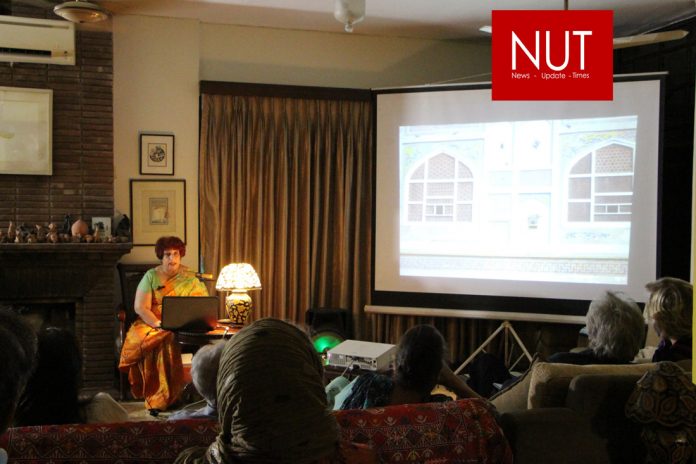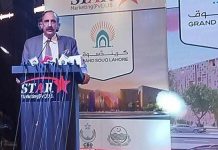Lahore (Muhammad Yasir)
Eminent scholar Dr. Kanwal Khalid presented her latest research paper entitled “Poetry on the Wall” at the 53rd THAAP Talk at its secretariat. In the enlightening session attended by culture & heritage enthusiasts, students, and academicians alike, Dr. Kanwal presented a detailed overview of the iconic picture wall of Lahore’s fort which is representation of the unique characteristic of Mughal emperor Akbar, fine detailing trademark of Emperor Jahangir and rich royal finish hallmark of Emperor Shah Jahan.
In historical references also known as “parda wall”, it was situated at the front side of the river Ravi at the time of construction and is attributed to the Emperor Shah Jahan for its beautiful artwork. Dr. Kanwal clarified that the poetic artwork on the wall and its embellishment plan were planned & initiated by the former Mughal rulers. She mentioned various historical references and revealed the whole process of creation of the wall including the selection of the wall, designing of niches, arches, frescos, panels, mosaics, kashikari, etc.
The speaker shared that it’s very amusing that on the whole wall from one corner till the end at Shah Burj, neither the scale nor the scheme of design gets out of rhythm and harmony, design patterns are the same, color combinations, use of fresco, animal paintings are in the same symmetry. She shared that designs on the wall are poetic verses having the same schemes of colors, designs, and objects. The wall presents strong references to the subcontinent’s life under the Mughal rule with large processions, festivals, animal fights, etc.
She also explained that the design vocabulary is very much interconnected in all the major portions and design composition has connectivity. She further elaborated that the creation of this artwork on the wall was a mammoth task why creators divided the wall into small portions, that were subdivided into small boxes having the same mathematical or geometrical calculations, these boxes were designed by the finest craftsmen of the era under royal patronage. The creation of niches, arches, frescos, panels, and mosaics each with a different color scheme reflects the vision and slightness of the creator. In the talk, the writer also expressed the myths and religious interpretation of images of animals such as swans, Uryal, dragons, angels, musical instruments, the use of various colors to convey different theologies, and people of different processions, etc. The insightful talk was warmly received by the participants.
Dr. Kanwal Khalid also gave answers to the questions asked by participants. At the end of the talk, Prf. Pervaiz Vandal, host of the evening thanked Dr. Kanwal Khalid for the comprehensive talk. He said that young researchers should work hard and discover new local references instead of only focusing on the references of foreign writers. The approach will help in understanding historical incidents more clearly.







